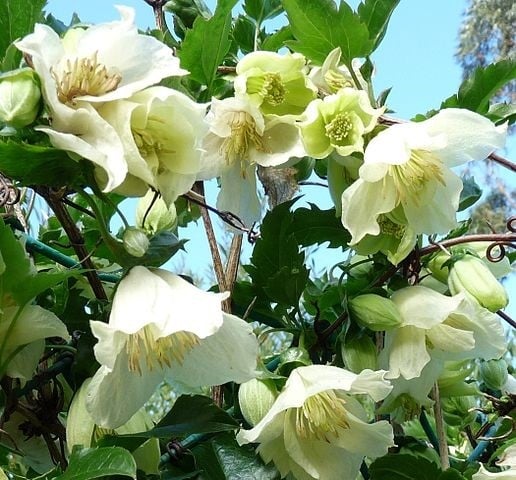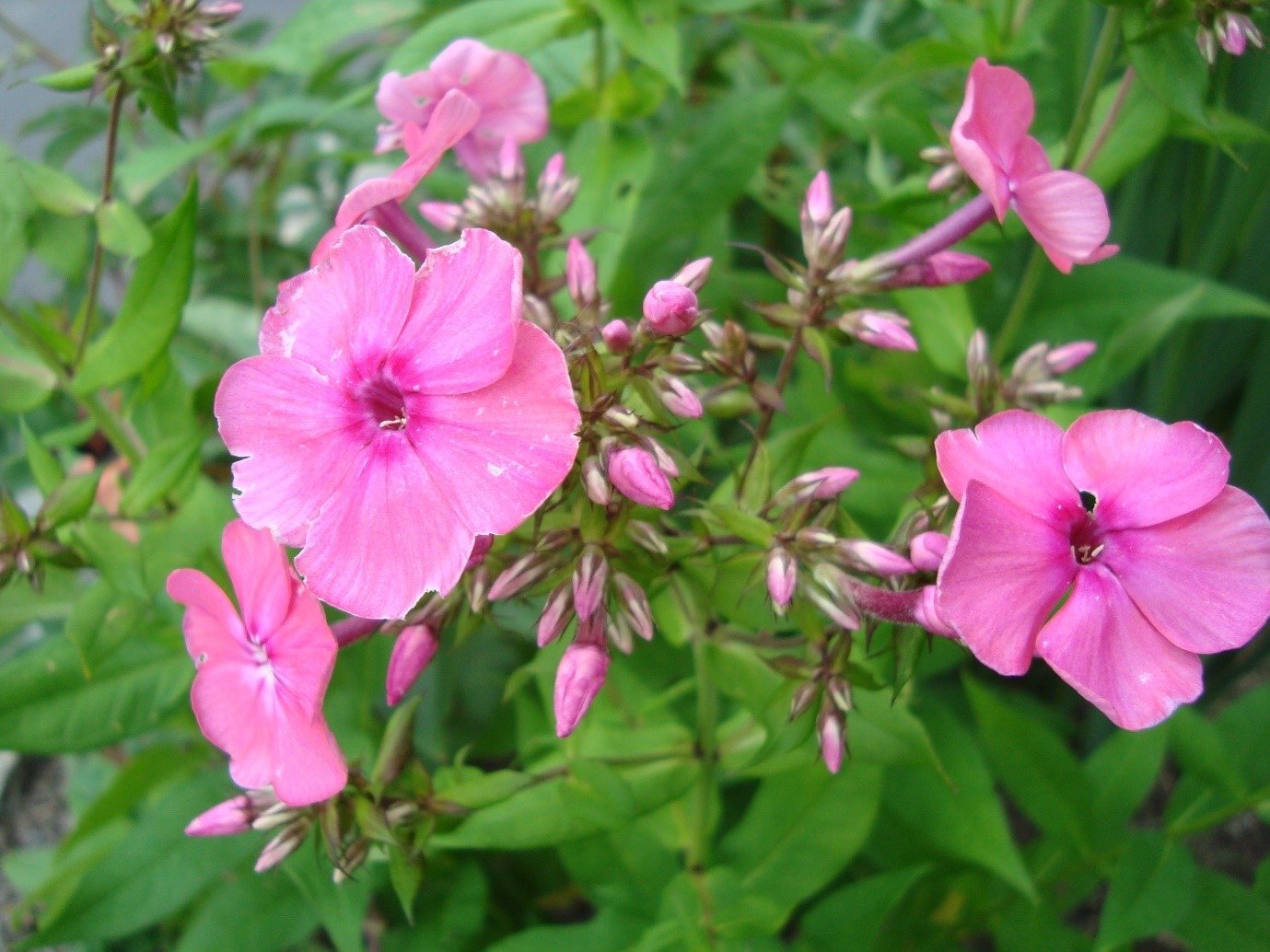The Ultimate Four Season Gardening Guide
Knowing what to plant and when to plant it can be problematic for even the most experienced gardener.
Understanding the things that plants need to thrive is key, along with assessing the best time to plant seeds, seedlings, young plants, established plants, and shrubs are all sure-fire ways to achieve a great looking garden.
Having the right garden design will make it a fantastic place to spend time throughout all four seasons.
Winter
 We associate winter with cold, grey skies and weeks of rain. As a season, winter can be a gardener’s nightmare. Unexpected frosts and plummeting temperatures can lead to your less hardy plants becoming frost-bitten.
We associate winter with cold, grey skies and weeks of rain. As a season, winter can be a gardener’s nightmare. Unexpected frosts and plummeting temperatures can lead to your less hardy plants becoming frost-bitten.
Weeks of rain can lead to plants becoming swamped, their root system saturated and rotting in wet soil.
That said, your garden doesn’t have to be barren and grey in winter.
Garden Design
The right garden design can help your garden weather the winter without looking, grey, empty and untidy. You just need to get the hard landscaping right.
- Use garden paths as points of interest in the winter – For example, create a diamond pattern of pathways across the lawned area, complete with a mix of well-chosen shrubs, deciduous and evergreen species.
- Use lighting – As darkness falls earlier in the winter months, gently illuminate the garden with a mix of solar-powered lighting options. Mark out pathways with posts and use net lights over shrubs and hedges.
- Add a fire pit – The chill of winter means that we often retreat indoors, but with plenty of layers of clothing and a roaring fire pit, you can still enjoy time in the garden. While some insects and animals hibernate, there are still plenty of birds and animals that will visit your winter garden.
- Birds – Many garden bird species need your help in the winter months. With food in short supply, a bird table that offers seed and high-energy suet balls is ideal. As well as giving nature a helping hand, attracting garden birds means more colour, as well as plenty of birds who will return in the spring and summer to eat the pesky plant-eating insects.
The Mediterranean style of garden design works well in winter. We often assume that gardens in warmer countries will be awash with colourful plants, but dry, arid soils means little sustenance for plants. Mediterranean gardeners add colour by painting hard landscaped surfaces.
Paint a wall a deep red or a fire orange for a pop of colour in winter. Add evergreen shrubs to your borders, and colourful pots too. To stop it looking too garish, keep the pots the same colour, and rather than opting for several small pots, choose two or three large ceramic pots for colour and form in your winter garden.
Planting
Most of us associate the warming smells of cinnamon and clove the winter months. You will be pleased to find that some of the plants that give colour in winter also have a delicious scent.
Winter colour schemes are all about cooler colours, such as pretty creams and whites, with the odd dash of deep pink and vibrant red. This helps them to stand out against the background of dark green leaves of the holly bush or the fir tree.
Try these delicately coloured shrubs that have sweet fragrances to cheer any winter garden:
- Abeliophyllum distichum has a fragrant white flower that blooms in February. It can reach up to 2ft in height, and works well in borders or pots.
- Daphne mezereum has purple/red flowers that appear in February, lasting until early April. It grows up to 5 feet tall, so it is probably best in a border.
- Hamamelis × intermedia have scented yellow and orange flowers that brighten up the gloom of winter from December to March. These plants can grow up to 10 feet. Evergreen shrubs bring colour to the garden all year round, and they add an extra dash of sophistication during the winter months…
- Arbutus unedo has white flowers tinged with pink that first make an appearance in October. Growing up to 20 feet tall once established, the nodding pinky heads of this shrub can last well into December.
- Elaeagnus pungens 'Maculata' has small, white flowers that bloom from October to January. This is another plant that adds height, growing between 8 and 15 feet tall.Climbing plants are known to be fragrant in summer, but these winter climbers add a welcome fragrance as you take in the beauty of your winter garden…
- Clematis cirrhosa is a sprawling climber with pretty cream flowers that bloom from November to March.
- Clematis cirrhosa reaches around 13 feet in height, with gorgeous cream spotted maroon flowers that add colour and fragrance from November through to March.Herbaceous perennials are plants that die back annually, but the root system survives underground, coming back to life the following season.
- Bergenia comes in several varieties and species, all with large green leaves and pink or white flowers. They spring into life from January to April each year.
- Iris unguicularis has pretty lilac flowers from late October right through winter until March.Bulbs are also great for bringing colour to the winter garden, from the delicate mauve flowers of the crocus to the tubular nodding head of the snowdrop. Plant these in clusters in borders and lawns with plenty of organic matter to get the best blooms over winter. Try the following:
- Eranthis hyemalis, with its yellow flowers from January to March. Height 15cm (6in)
- Scilla mischtschenkoana ‘Tubergeniana’ has pretty pale blue flowers that brighten up grey February days.
Essential Winter Gardening Jobs
Winter is also the time to prepare your garden and get it ready for spring;
- Rake up fallen leaves – Rotting leaves can encourage insects to lay eggs in borders and on lawns. Pile them into black plastic bin bags and leave to rot down over the year, ready to use as fertiliser the following spring or summer.
- Clean out the potting shed and get it ready for spring planting – Again, hibernating insects and emerging larvae can do a lot of damage to fragile seedlings.
- Disinfect pots – If you reuse pots, either plastic ceramic, use an environmentally friendly disinfectant to clean them out. Once washed, upturn the pots so that they dry thoroughly.
- Bring in fragile plants - Or, if this is not feasible, insulate them against the chill of winter with a layer of straw held together with a band of hessian. A weed control mat works just as well.
- Cover garden furniture – If you don’t have storage, covering your rattan or plastic garden furniture is essential for protecting it from the effects of weather and damage.
Spring
 The warmth of spring is a welcome sign after months of dark days and sub-zero temperatures. Even with only an increase of few degrees in temperature, your garden will slowly start to creep back to life.
The warmth of spring is a welcome sign after months of dark days and sub-zero temperatures. Even with only an increase of few degrees in temperature, your garden will slowly start to creep back to life.
As well as beautiful buds on trees and shrubs, spring bulbs start to poke through the soil and insects can now be seen scuttling about. Garden birds look for food to feed their young, so keep putting out seeds and high energy suet suitable for parent birds and their fledgelings.
Spring colour lifts the spirits, and so a smart planting strategy means that your garden will spring back to life with colour and scent.
Garden Design
If you have big plans for landscaping your garden, spring is the season to put your plans into action. The soil will be drier and much easier to turn over and shift about, and any plants, trees and shrubs our plant will thrive in the warmer soil.
But take care, as it can be late April or even early May by the time that night frosts are over. Keep fragile plants in the shadow of the house walls or in the warmth of the greenhouse until you are confident that there will be no more snap frosts.
A modern garden design works well in spring. Add vibrant pockets of colour with brightly coloured plant pots. Cluster them together for maximum effect, adding form and interest by using similarly coloured pots in differing sizes and heights.
For a minimal garden design that blossoms in spring but retains forms and texture in throughout all of the seasons, look to Japanese garden design for inspiration. Water features are always soothing in a garden, and these are a key component in Japanese design.They are also great for attracting wildlife. From thirsty garden birds to frogs looking for a place to lay their spawn, flowing water is an attractive garden element.
Plants
You are spoilt for choice with spring flowers and plants, and so it is difficult to create an exhaustive list. For maximum effect, cluster similarly coloured flowers together, using different heights to draw attention to the flowerbeds.
Plant a mix of ground-covering plants, with mid-height plants behind and taller plants to the rear. To maximise the effect, plant against a green wall of hedging, a wall, or fencing.
Spring colour schemes start to bring pops of colour to the garden. Oranges and golden yellows (such as trumpet heads of daffodils) are a great starting point. Add hints of deeper hues of reds and purples with tulips and similar flowers. Create carpets of colour by planting varying shades and tones of similar colours across a space to maximise effect.
Bishop's hat 'Sulphureum' has graceful wiry stems with luscious two-tone yellow flowers, dancing above heart-shaped, shiny green leaves. This plant is hardy and will survive in shade. Grows to around 2 feet tall.
Wallflower 'Bowles's Mauve' is in flower from spring until well into late autumn making it the ideal choice for any garden. Producing purple flowers above the grey-green foliage, it prefers full sun and well-draining soil. Grows to just over 2 foot.
Siberian squill 'Spring Beauty' at 6 inches, deep blue flowers from this spring bulb are delightful, becoming paler in colour as spring drifts by. It prefers the cool of the semi-shade.
Cyclamen are hardy plants often available from supermarkets during the winter months. Once spring has arrived, plant out in full sun or in the shade of trees. Available in white, deep red and pink, they will come back again and again. Grow 4 inches in height, perfect for border edging and plant pots.
Tulip 'Spring Green’ theseblousy flowers are a common sight in gardens across the country. Along with daffodils, they are a sign that spring has truly sprung. Try this green coloured tulip for a change. They grow to around 12 inches, ideal for just inside flower border and beds.
Tufted Pansy are cushioned by green foliage and topped with flowers that bring colour to the garden from early spring right through to May. They prefer shade, and grow to around 9 inches in height.
Magnoliais a plant coveted by many gardeners. The slender, rose-pink petals open to form a star. Surprisingly hardy considering the delicate looking petals, it is frost resistant but is not keen on the morning sun. Plant in moist soil. Established Magnolias can grow to 16 feet or more.
Essential Spring Gardening Jobs
As well as enjoying the warmth of spring, there are some essential spring gardening jobs that need completing at this time of year.
- Garden furniture – Unwrap garden furniture and check for damage. On warmer days, gently sponge down bistro sets and rattan garden furniture to remove the dust and grime of winter.
- Spring bulbs – In the late winter, plant bulbs in pots, and once the danger of frost has passed, decorate the patio with the colourful pots. Waiting for the bulbs to flourish in mid to late spring.
- Encourage wildlife – You can do this in several ways. From feeding garden birds to building ladybird’s hotels, attracting wildlife supports the delicate eco-system of your garden. Watch out for hedgehogs and other wildlife too.
Summer
 By summer, your garden will be in full swing, Full of bright coloured flowers and flourishing shrubs, there is no doubt that a summer garden is a delightful place to relax.
By summer, your garden will be in full swing, Full of bright coloured flowers and flourishing shrubs, there is no doubt that a summer garden is a delightful place to relax.
It is also a great space for entertaining. From BBQs to garden parties and dining al fresco with your family, more and more homeowners are using the garden space as an extension of the interior space of a home.
Garden Design
With high-quality garden furniture, it is no surprise that the garden is becoming an outdoor living room. Garden seating is becoming more relaxed, with many items (such as rattan loungers) offering relaxed seating solutions for family and friends.
Add more colour with fantastic accessories, such as scattered floor cushions, outdoor rugs and prettily coloured lanterns. Candles are fantastic for bringing a hint of romance to dusk in the garden, and they work well with attractive solar lights.
Planting
Plants will now be in their full glory, with a garden full of colour and heady fragrance at all times of the day.
Summer colour schemes can be a riot of colour if you want fun in the sun, or you may want a more refined look. Remember, the brighter the flower the more sunshine it will like.
Orange, yellow and red flowers will thrive in full sun, whereas the more delicate blues, greens, purples and creams will prefer a semi-shaded or a completely shaded spot. Bring colour to life in your garden with painted fencing and walls contrasted with the muted tones of ceramic pots.
There are some great plants available that soak up the sun and heat of summer. But, always check the planting instructions, as some plants are not robust enough to withstand harsh sun and dry soil.
- Sunflowers – If there is one plant that symbolises summer, it is the sunflower. Large and blousy, there is something pleasing about a row of strikingly tall sunflowers. Take a look at other varieties of species, including the variety with a streak of maroon in the petals.
- Lavender – With a delicious scent that soothes and relaxes, lavender is a must for the summer garden. Bees love the sweet-smelling purple spikes, too. Plant near border edges so that when it is brushed against it releases its fragrance into the air.
- Sedums – Pink or white in colour, this plant loves a semi-shaded spot and works well in any border. The great thing about sedum is that with the right mix of weather, its compact heads of tiny star-shaped flowers can last until November.
- Helenium – These plants look like a miniature sunflower with a daisy head, deep yellow with splurges of deep, dark red on the petals. Heleniums love moist soil and full sun. The impact of the flower is helped by the skirt of petals at their base, perfect for livening up a summer flower bed.
- Phlox – Bright and showy, Phlox is a large species of flower, the majority of which have a heady scent. With bushy flowers and a spiky stem, they work well in huge clumps and clusters, perfect for creating a sea of pink and purple in the border. Plant near to patios and pergolas to enjoy the scent-filled air.
Essential Summer Gardening Jobs
- Tie back spring bulbs – Now that the spring bulbs have done their thing, you need to tie back their foliage. Don’t cut them down, as the bulb will need to suck back the goodness in the leaves, readying it for a fantastic display the following spring. Use gardening twine to bundle leaves neatly. Once they have turned brown, chop the leaves and lay fresh mulch over the bed.
- Deadhead for a continuing glorious display – Some bedding plants thrive throughout summer, providing vibrant colour for beds and borders. When a flower dies, the plants will produce seed but to continue the display, dead-head flowers. Take off the old heads to encourage the plant to produce more flowers.
- Prune shrubs – Some shrubs benefit from a prune in summer to stop them growing too tall and too straggly. Be careful - don’t go over the top and leave the plant vulnerable.
- Trim hedges – Now that the spring growth spurt is over, you can get the hedge clippers out and cut back privet and leylandii hedges so that they remain neat and sculpted for the summer months.
Autumn
 The fourth season of the gardening year is the time that plants and shrubs ready themselves for the winter months ahead. It is also a time of fantastic colour.
The fourth season of the gardening year is the time that plants and shrubs ready themselves for the winter months ahead. It is also a time of fantastic colour.
Deep reds and golden yellows can be found in many gardens, with some plants shedding their leaves revealing deep scarlet stems.
Garden Design
Autumn evenings are chillier, but that is no excuse for the party to go inside. There are still many lovely plants that are full of colour and scent to entertain us into the evening.
Enjoy the twinkling light of solar powered gardening lights, as well as the mesmerising flames from the fire pit or chimenea. You could even invest in a patio heater, allowing you to enjoy watching the sunset or entertain friends.
You will need to start covering garden furniture to protect it from night time temperatures and the autumnal rains. To protect cushions from damp, place in a water-tight plastic gardening box that will also protect them from insects.
Now is the time to create a meadow garden in readiness for the following spring. Allow meadow type flowers – the foxgloves and the sea daisies – to go to seed, and help them scatter far and wide by mowing or strimming through them. Let the clippings rest and dry for a while and then rake up, composting the waste.
Finally, scatter a top layer of mulch over the bed to give the seeds protection over winter.
Plants
The autumn garden can still have plenty of colour. The following plants add a vibrancy in the closing months of later summer, well into autumn.
Autumn colour schemes are cooler in tone, with blues and lavender blues being the ideal colour scheme. Cluster pretty blue flowers together, using white as a means of throwing a spotlight on the focal point of a flower border.
Ceratostigma plumbaginoides produces a blue flower that appears in late summer. A spectacular plant, the leaves turn crimson red and provide a delightful contrast against the pretty blue flower. It can be invasive in a garden, so plant in pots in a sunny spot in the autumn garden. It is also a plant that many gardeners ‘underplant’ in order to create groundcover beneath larger shrubs.
Salvia ‘Blue Enigma’ is another plant with tall spikes of blue flowers.Producing blooms non-stop from mid-summer until the first frosts, this plant is guaranteed to keep the colour coming. They enjoy a sunny spot and are hardy plants, but they won’t enjoy heavy, wet, or cold soil. Take cuttings in late summer and then store in the greenhouse or another warm place over winter and plant seeds in the spring. This plant is great in pots, too.
Clematis ‘Cassandra’ is a non-climbing clematis with a pleasing clumping habit. It’s lavender coloured tubular blooms are heavily fragranced, ideal for evenings in the garden. They enjoy full sun and a free-draining soil.
Anemone ‘Honorine Jobert’ is a late flowering anemone. It has elegant white flowers with egg yolk yellow centres, perfect for introducing cool notes into the sea of crimsons and yellow of the autumn garden. It prefers partial shade, and looks great next to deep coloured flowers or against a green luscious hedge.
Essential Autumn Gardening Jobs
Autumn is the time to shut down the garden, but not before you enjoy it for a short time. As the days of autumn start to give way to winter, there are some jobs in the garden that need to be done:
- Empty and scrub out water butts – Egg laying insects can invade water butts over the summer. To save your seedlings in spring, now is the time to empty and scrub out water butts. They will refill over the winter, ready for use in spring and summer.
- Turn the compost and insulate it – Composting in your garden is a great way to create fertiliser for spring, as well as for planting seeds. Turn it over to incorporate air and then insulate it – an old carpet over the top of the heap works well. This will help to keep the autumn heat in so that the compost breaks down, ready for use in spring.
- Empty containers – If plants in pots won’t survive the winter, now is the time to compost them or move them to a place where they are sheltered and protected.
- Protect garden furniture – Invest in high-quality PVC covers for all your garden furniture. Move cushions indoors, or keep them in a plastic garden box to stop them becoming damp or damaged over winter.





